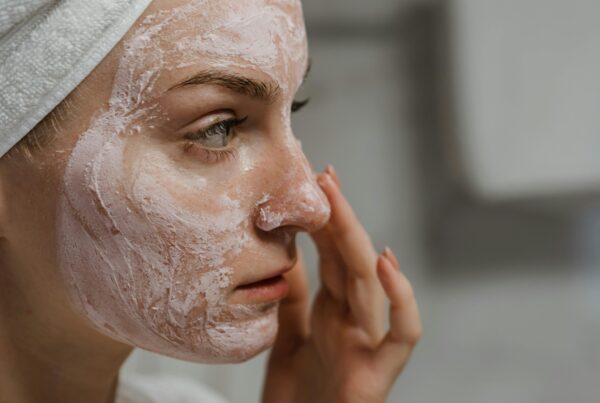Lipstick is the most popular beauty product used by women around the world, but how many women actually know what ingredients are in lipstick?
Lipsticks contain a noxious mixture of petroleum-based chemicals, many of which have not been tested for safety. Some of the chemicals in lipstick are easily absorbed through the lips and each time you lick your lips, you ingest a small dose of these toxic chemicals.
Lips are sensitive and easily absorb products through the thin layer of skin that covers them. Lip skin lacks hair and sweat glands, which means that they don’t have the same natural defenses that other types of skin have.
The ingredients in lipstick include a number of toxic chemicals such as:
1. Methylparaben
Methylparaben is added to lipstick because it is an antifungal and a preservative. It’s widely used in other cosmetics too. Its purpose is to prevent fungal growth in the product generally to preserve it.
Methylparaben is rapidly absorbed through the skin and intestinal tract, but the body eliminates it quickly, too. It is not stored in the body. Despite concerns about it being carcinogenic, studies have not conclusively shown that it is.
However, this preservative is restricted in most of Europe because of the possible cancer risk. It can possibly also alter the endocrine system or be toxic in other ways. Alarmingly, methylparaben is often a “hidden” ingredient, which means that it is not shown on the ingredient list, making it almost impossible for consumers to be aware of the presence of this toxic ingredient.
Methylparaben has been classified as a “moderate risk” by the Cosmetics Database.
2. Polyparaben
Polyparaben is added as a preservative to lipsticks to prevent the growth of harmful bacteria and mould. It keeps the oily part of the lipstick from going rancid. This protects both the product and the consumers. There is evidence that it is an endocrine disruptor and that it is an allergen for some people. It does not seem to accumulate in the body and has been passed as safe for use in cosmetics provided that concentrations are restricted. However, the cosmetics database lists it as a “high risk” product.
Many brands have created beautiful, effective, non-toxic lipsticks using safe ingredients. Some of them use natural preservatives like salt, honey, and clay to protect the products, while others claim to just use half of the acceptable amount of polyparaben.
The disadvantage of products with no polyparabens is that they are often more solid, to keep them fresher for longer because it is the soft, oily part of the ingredients that turn rancid the quickest. These polyparaben-free products give you peace of mind that they are not going to disrupt your endocrine system and are free of carcinogens. They are usually more cost effective too.
3. Retinyl Palmitate
Retinyl palmitate is added to lipsticks as an antioxidant. Retinyl palmitate is used as a synthetic preservative. It’s a synthetic form of vitamin A, and it has been shown that it may be harmful to pregnant women. The cosmetics database lists it as a “moderate hazard” because there is some evidence that links it to some cancers and reproductive problems. It is easily absorbed by the skin. Once absorbed, it turns first into retinol and then into retinoic acid.
When exposed to ultraviolet light, retinol compounds break down and produce toxic radicals that can damage DNA and cause genetic mutations, which are a precursor to cancer.
The advantages of using it are that, even though it is a synthetic form, the body can still use it as vitamin A. Once it has been applied to the lips it is absorbed through the skin. It is one of the most important vitamins for the skin in terms of skin appearance because its tiny molecules can penetrate right to the deeper layers of the skin, helping to repair collagen and elastin.
This is why products containing it are often marketed as “anti-aging”. It is an exfoliator that has the effect of removing the upper dry skin layers to reveal the new cells underneath. This is how it keeps lips soft and smooth.
4. Dyes
Dyes are used to give lipstick their colour, and there are certainly many different ones on the market to choose from. Which colours are in fashion changes all the time, but the reds and pinks are classics with timeless appeal.
A lot of lipsticks are made with synthetic dyes that come from aluminium or petroleum products. These dyes are stored in our bodies in the organs and fatty tissues. Coal tar, one of the petroleum products that’s used, is known as a carcinogen. Some of the colours may even contain heavy metals. Some of them are not approved as food colourants yet may be used in cosmetics.
The disadvantages of using lipsticks with natural colourants are that they don’t have such a long shelf life, and they can be more expensive. The colours tend to fade quicker, so need to be applied more often. The colours are also not as consistent as you would get from an artificial source.
5. Tocopheryl Acetate
Tocopheryl acetate is a specific form of vitamin E that’s often found in skin care products and dietary supplements. It’s also known as tocopherol acetate or vitamin E acetate. This ingredient is basically a form of vitamin E created in the laboratory.
Manufacturers take natural vitamin E and add acetic acid to it to make it last longer and to reduce its cost. Vitamin E is known for its antioxidant properties, therefore it is used in lipsticks because it’s a natural skin-conditioning agent and antioxidant. The Cosmetics Database qualifies it as a “moderate risk” because it can cause itching, burning, peeling, hives and blisters on the skin, and it can be toxic. Some studies with it showed some “enhancement of photocarcinogenesis,” which means it may increase the carcinogenic effects of UV rays.
There is little difference between the natural and synthetic forms of most tocopherols but with vitamin E, natural is better.




